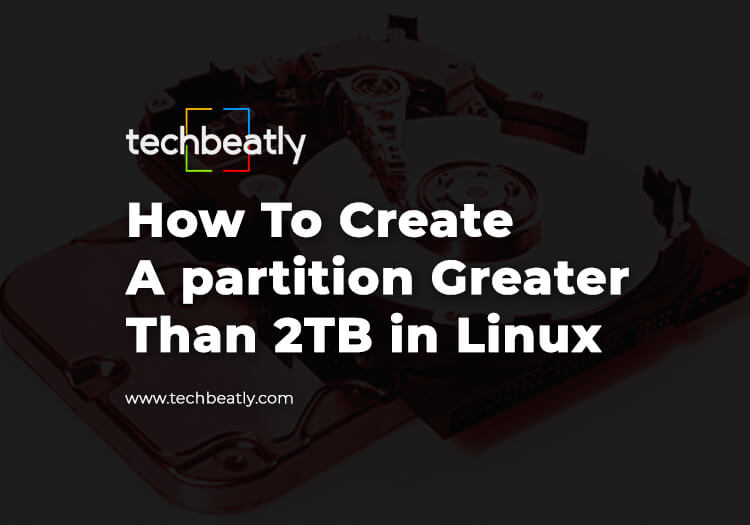
How to create a partition greater than 2TB in Linux
Due to limitation of fdisk utility, you will not be able to create partition greater than 2TB in linux with fdisk. This is a quick example to show how to create a bigger partition using parted utility.
Check your disk details using fdisk. In this case /dev/sdc is a RAID5 volume (3x physical disks in background).
[root@ams-srv-101 Unix]# fdisk -l /dev/sdc
Disk /dev/sdc: 3599.5 GB, 3599451029504 bytes, 7030177792 sectors
Units = sectors of 1 * 512 = 512 bytes
Sector size (logical/physical): 512 bytes / 4096 bytes
I/O size (minimum/optimal): 4096 bytes / 4096 bytes
Start parted with /dev/sdc and check parted options
[root@ams-srv-101 Unix]# parted /dev/sdc
GNU Parted 3.1
Using /dev/sdc
Welcome to GNU Parted! Type 'help' to view a list of commands.
(parted) help
align-check TYPE N check partition N for TYPE(min|opt) alignment
help [COMMAND] print general help, or help on COMMAND
mklabel,mktable LABEL-TYPE create a new disklabel (partition table)
mkpart PART-TYPE [FS-TYPE] START END make a partition
name NUMBER NAME name partition NUMBER as NAME
print [devices|free|list,all|NUMBER] display the partition table, available devices, free space, all found partitions, or a
particular partition
quit exit program
rescue START END rescue a lost partition near START and END
rm NUMBER delete partition NUMBER
select DEVICE choose the device to edit
disk_set FLAG STATE change the FLAG on selected device
disk_toggle [FLAG] toggle the state of FLAG on selected device
set NUMBER FLAG STATE change the FLAG on partition NUMBER
toggle [NUMBER [FLAG]] toggle the state of FLAG on partition NUMBER
unit UNIT set the default unit to UNIT
version display the version number and copyright information of GNU Parted
Check current partitions if any
(parted) print
Model: DELL PERC H730P Mini (scsi)
Disk /dev/sdc: 3599GB
Sector size (logical/physical): 512B/4096B
Partition Table: gpt
Disk Flags:
Number Start End Size File system Name Flags
Create a GPT label
(parted) mklabel gpt
Set the unit to GB (or TB as you need) and create a partition
(parted) unit GB
(parted) mkpart primary 0 3599.5
Verify partition and exit from parted utility
(parted) print
Model: DELL PERC H730P Mini (scsi)
Disk /dev/sdc: 3599GB
Sector size (logical/physical): 512B/4096B
Partition Table: gpt
Disk Flags:
Number Start End Size File system Name Flags
1 0.00GB 3599GB 3599GB primary
(parted) quit
Information: You may need to update /etc/fstab.
Disclaimer:
The views expressed and the content shared in all published articles on this website are solely those of the respective authors, and they do not necessarily reflect the views of the author’s employer or the techbeatly platform. We strive to ensure the accuracy and validity of the content published on our website. However, we cannot guarantee the absolute correctness or completeness of the information provided. It is the responsibility of the readers and users of this website to verify the accuracy and appropriateness of any information or opinions expressed within the articles. If you come across any content that you believe to be incorrect or invalid, please contact us immediately so that we can address the issue promptly.
Tags:
Comments







Leave a Reply